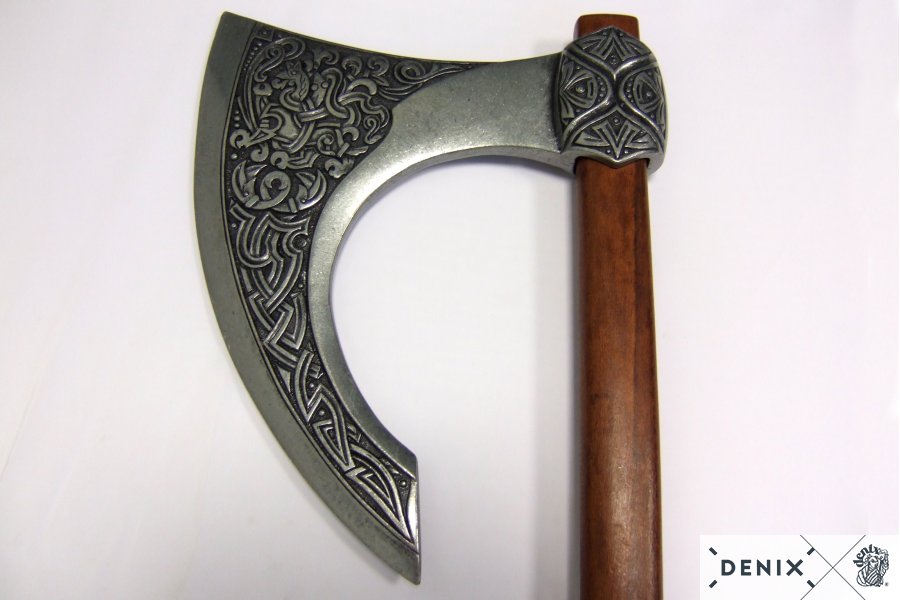

Each individual axe is therefore completely unique, and, besides the smith’s initials, is stamped with a serial number and year of production. Since swords were not effectively useful against plate armor, maces, axes and war hammers were preferred by foot soldiers during the middle ages. Viking warriors are thought to be the first Europeans to make a large Battle Axe just for war.
Nordic battle axe series#
The different axe models even differ from one series to another, and sometimes a model may be produced only once. The Battle Axe was a crucial instrument since the Stone Age. It is characterized by the practice of single burial, the deceased usually being accompanied by a battle-axe, amber beads, and pottery vessels. The legacy axes are therefore forged in small series by individual blacksmiths in partnership with Gränsfors Bruk. The Single Grave culture (German: Einzelgrabkultur) was a Chalcolithic culture which flourished on the western North European Plain from ca. The cheaper iron could then be used for the rest of the axe.įorging a Gränsfors Bruk historical axe is a complex and time-consuming process that can include up to 100 heats and several thousand hammer blows for each model. Historically, the blacksmith forge-welded axes – among other things – so that the precious steel would only be used in the very edge of the tool.

This process creates both possibilities and challenges for the blacksmith striving to achieve a good result. Some models are forged of pure carbon steel while others are laminated from mild steel and carbon steel.įorge welding mild steel and carbon steel into a single piece requires a deep understanding of the material and the heat, the essence of all forging. Each axe is hand forged using a coke forge, hammer and anvil, thus every individual axe is unique. The focus of the historical axes lies in the forging process to preserve, develop, and honor the forging traditions of old as well as to show the possibilities within axe forging. Based on historical examples, the axes are not only traditional in form but also in the process of forging. These replicas are modelled after archaeological findings, and the originals can often be seen in museums in Scandinavia. The axes have their roots in the time between 600 – 1200 CE and are a continuation of the ancient tradition of axe forging in Sweden and Scandinavia, though models from Central Europe may also be offered. In contrast to Gränsfors Bruk’s other axe models, the historical axes are produced not to serve a distinct function in today’s world, but rather to show how axes were in the past. Gränsfors Bruk’s historical axes are replicas of axes that were common many hundreds of years ago. Since time immemorial has the axe served as a tool, a weapon, a status symbol and a sacred object. Historical Axes Historical axes are not in production or available for purchase.


 0 kommentar(er)
0 kommentar(er)
